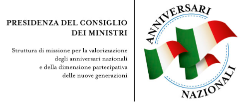Pala, Mauro
Wahrnehmung, Topographie, Planung: der städtische Raum bei Gramsci und Benjamin / Perception, Topography and Planning: The Urban Space in Gramsci and Benjamin
Benjamin explores Paris, the cultural capital of the nineteenth century, finding similarities between the
French capital and the Berlin of his childhood. Both cities are archives for the flâneur, in which the
contemplative beholder identifies the significant threads of fragmented, atomized modern existence
within the urban topography. Benjamin stresses the importance of the marginal and neglected features of
the metropolis for developing a mythopoetic phenomenology of commodification, putting an emphasis on
negative factors which spread reification and alienation among urban dwellers. For Gramsci, urbanism
represents a pole in the worldwide dualism between city and countryside - città versus campagna - and
all stages of Western civilization since antiquity have borne witness to the antagonism between these
physical and experiential spaces, which, with the outbreak of bourgeois revolutions, have also hosted the
active forces of economic exploitation and, at the same time, the forms of resistance against growing
capitalism. This contribution aims at throwing light on the modalities through which both thinkers
consider the city enmeshed in the actual processes of producing space, through a journey into the
concrete and the abstract, the local and the global, and by conceiving heterogeneous theories which
nevertheless claim their descent from Marxism.
https://ro.uow.edu.au/gramsci/vol3/iss4/
| Lingua | deu |
| Nomi |
[author] Pala, Mauro |
| Soggetti |
Topografia
Egemonia Benjamin, Walter
Topography
Hegemony Benjamin, Walter |

